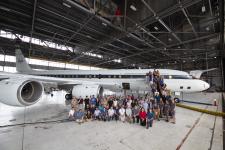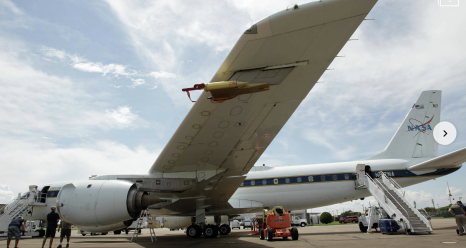Atmospheric Emissions and Reactions Observed from Megacities to Marine Areas (AEROMMA) is a comprehensive study led by NOAA’s Chemical Sciences Laboratory to address emerging research needs in urban air quality, marine emissions, climate feedbacks, and atmospheric interactions at the marine-urban interface and future satellite capabilities of monitoring atmospheric composition over North America.
Flight range of the NASA DC-8 indicated as rings on the map.
Major objectives of the AEROMMA project include:
- Timely information to environmental managers and stakeholder groups on emissions that impact climate and air quality.
- Improvement in the representation of emissions and chemical and physical processes in the next generation NOAA weather-chemistry models.
- Reductions in global climate model uncertainties through provisions of improved observational constraints.
- Quantification of the emissions of VCPs (Volatile Chemical Products), cooking, mobile and other trace gas sources in urban areas.
- Accurate representation of chemistry and aerosol microphysics in the marine atmosphere.
- First comprehensive aircraft observations of atmospheric composition when TEMPO (Tropospheric Emissions: Monitoring Pollution) is operational.
- Value assessment and risk reduction for future satellite missions such as NOAA GeoXO (Geostationary Extended Observations).
NASA DC-8 Proposed Instrument Layout














